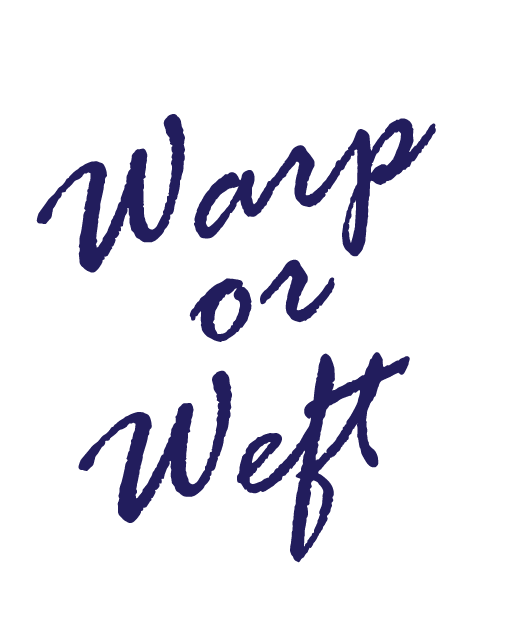Frequently Asked Questions
WHY DID YOU START WEAVING?
I've always loved creating things. In elementary school I wrote plays, in high school I learned to knit, I got into card making for a bit in my early 20s, made one very large and detailed scrapbook for my niece, and then detoured into pottery for 5 years. I moved across the country in 2013 and found it a bit daunting to move the heavy, fragile ceramic objects. I also really enjoyed how warm, welcoming and encouraging the ceramics community was in Philadelphia, but had a different experience when I arrived in Seattle, which led me to look for another creative outlet. I started knitting again and mentioned to my husband that I was interested in learning to weave. He encouraged me to start weaving and I did!
HOW DID YOU GET STARTED IN WEAVING?
Oh boy! Learning to weave is a bit like teaching yourself to play the violin. I dove right in and bought a rigid heddle loom, but quickly wanted to be able to weave more complex patterns and excitedly - and naïvely - bought a floor loom. I tried to find information online and bought a bunch of books, but had a difficult go of it for about a year. I ended up joining the local weavers' guild where I found a great teacher who had over 40 years experience. I took structured classes with homework for a whole year and learned much more than I ever would have learned on my own.
WHAT IS YOUR WEAVING PROCESS?
The abbreviated way that weaving works for me is as follows:
1. Decide on a project - scarf, pillow, table runner, etc.
2. Select a pattern by looking through books.
3. Decide on yarn. Colors, yarn material (cotton, wool, cashmere, linen, etc.), and yarn weight are very important.
4. Calculate the amount of yarn needed and place an order if I need something other than what is in my stash. Most of my weaving yarn is ordered over the internet. Several years ago, the last of the seven weaving stores in the Seattle area moved out of the city and significantly limited their hours, so online is the only way to go. If I have to place an order, yarn can take anywhere from a few days to weeks to arrive.
5. If I haven't woven with the particular yarn before, I weave a small sample to see how it looks, then wash it to see if it holds up as constructed. Sometimes sampling will include multiple color combinations - does it look better light on dark or dark on light? Dark blue, light blue or gray?
6. Wind a warp. Each thread in the warp (the yarn that is wrapped around the loom) is wound individually around a warp board (a board with pegs) for the full number of yards needed. This could involve winding 500+ individual strands of yarn for 12 or more yards each. When the winding is finished, being careful to have the exact number of threads, sticks are placed in the top part, a bunch of parts are tied together, a crochet style chain of the length is made to prevent the yarn from tangling, and the whole thing (including the sticks) is carefully moved from the warp board to my loom.
7. Thread the loom. Each of the warp threads (sometimes 500+) need to be pulled through the reed (the metal piece that looks like a big comb) AND the individual heddles in the order specified in the pattern. This can take hours or days depending on the number of warp threads.
8. Wind onto the beam. The entire length of the warp needs to be wound onto the back beam. This involves tying knots on the back and winding the whole length of warp until the ends are near the front of the loom. Then knots are tied onto the front at the exact same tension all the way across. This can be easy or difficult depending on the type of yarn used.
9. Weave!!
10. Finishing. The woven cloth is cut off the loom. Twist fringe or hem stitch the ends to prevent unraveling. Wet finishing is often required. Sewing is necessary for some items - pillows, garments, etc.
WHY ARE HANDWOVEN GOODS SO EXPENSIVE?
The amount of time it takes to complete a handwoven item is far greater than the amount anyone will ever pay for the item. The process above takes me anywhere from a few days to a few weeks per item. This is in addition to the costs of materials and shipping.
WHY DO YOU CHARGE FOR SOME KNITTING PATTERNS?
The patterns for which I charge a fee are patterns that I design myself and knit multiple times before posting. I try to keep them affordable - less than the cost of a cup of coffee these days - for many hours of work on my end. The patterns that I whip together and haven't tried more than once are usually free on the blog. Patterns with slight modifications of other patterns are also free and credit along with a link to the original pattern is provided.
WHY DID YOU START A WEAVING AND KNITTING BLOG?
The blog started as a way to keep track of my projects. I really enjoy knitting and found it fun to be able to look back on past projects especially because I was giving away most of the finished items as gifts. When I started weaving, there wasn't a lot of information on the web for beginning weavers or non-weavers. I am happy to make information available for others to learn about weaving and the process of weaving.

